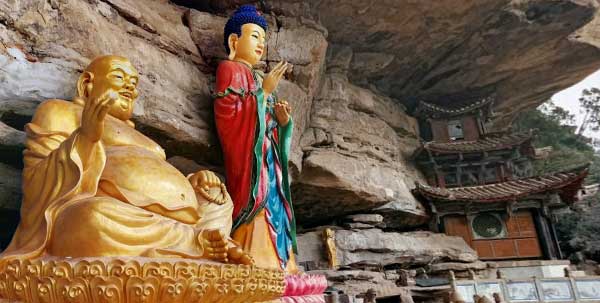Why going to Shaxi? Because it is one of the most preserved towns in China. You add the cobblestones still in use in most of the lanes and you get a picture of this awesome area not to be missed.
How many reasons do you need to plan your visit to Shaxi? The ancient temples, old alleys, and caravansaries of the ancient town of Shaxi are not just reminders of past glories. The area is an example of how the Chinese life used to be, with the Bai and the Yi minorities of the region living in the surrounding mountains and descending every Friday to trade their goods and products through the old lanes of the village.
Shaxi was part of the formal Silk Road, a network of trade and cultural exchange that connected the East to the West for almost 2000 years till the 15th century. When you walk in the little street and you close your eyes you can almost travel back in time to the Silk era.
The beautiful village of Shaxi is located in the Jiangchuan county, 100 km northwest of the Autonomous Prefecture of Dali, halfway to Lijiang. The history of this town goes back to the 6th century. By that time, it was an important tea and horse commercial reference during the Tang Dynasty. It was a village that never slept and kept growing. during the Ming and Qing dynasties - between 1400 and 1900 - Shaxi was an important trading point.

Natural highlights
Mountain of Stone Bell
The Mountain of Stone Bell is at a 40 min drive or a one and a half hour walk from Shaxi.
This site is known for its wide range of troglodyte caves, considered to be the Pearl of Yunnan. It is an extensive cave complex, with remarkable representations of Buddhist images carved into the rocks, of which the Guanyin is the most popular one. This rock art is a testimony of the popularity of Mahayana Buddhism in the Yunnan province.
.
Shaxi market area
The Shaxi Market Area is the most complete surviving example of a trading center along the historic Tea and Horse Caravan Trail, which linked Tibet with Southeast Asia between the fourteenth and nineteenth centuries. Founded by an early Tibetan Buddhist sect, the site includes an intact theater, guesthouses for merchants, and a temple precinct. Impressive defensive gates surround the complex.
You can read more details on the website of the World Monuments Fund.
UNESCO has recently added Shaxi to the list of the 100 most endangered sites around the world. It is not as easy to find historical towns in China that are well preserved. UNESCO has stepped in and that took the world eyes to this beautiful village together with new funds to maintain and improve the local architecture. One of the most important collaboration is the Shaxi Rehabilitation Project, an initiative in cultural heritage conservation and endogenous sustainable development.
Baoxiang temple
Don’t miss a visit to the Baoxiang temple, dating back to the Yuan Dynasty in the 6th century. The temple is also known as the Suspending Temple. You will have to climb about 1,000 steps stone staircase passing a monkey community to get to the temple. The temple became suddenly world famous when 141 pieces of Buddhist artefacts, including one of the only two teeth left by Sakyamuni Buddha, were discovered in the foundations.
.
Cultural highlights Shaxi and ShibaoShan
Visit Shaxi and ShibaoShan
Would you like to visit Shaxi and ShibaoShan? We have several options:
- A tailor made tour to Shaxi and ShibaoShan
- Or ask about the possibilities for a tour to this spectacular area
